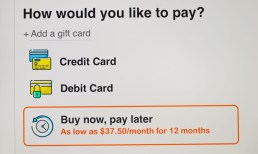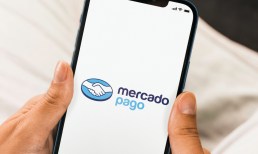Small Online Sellers Get Chance to Install a Big Tech ‘Buy Button’
The one-click “buy button” simplicity popularized by the Amazons and PayPals of the world is no less desired by small online sellers, and FinTechs are not letting that opportunity pass by.
In what he calls “probably the biggest thing that we’ve ever done,” Payoneer CEO Scott Galit told PYMNTS’ Karen Webster that the new Payoneer Checkout acceptance functionality announced May 10 signifies the “overall democratization of opportunity that we think is one of the defining mega trends of the digitalization of commerce.”
The announcement notes that U.S. direct-to-consumer (D2C) eCommerce sales alone are projected to reach $175 billion by next year — a 56% increase since 2020 — and Galit said Payoneer Checkout has been in the works one way or another for years. COVID-19 gave it a shove.
It’s also in response to the maturation of independent online sellers who first learned how to launch a business on Amazon. Now, many want to branch out, making marketplaces part of the channel mix rather than the sole way of reaching consumers.
“All of a sudden we started to see this growing wave of small businesses saying … ‘If I’ve got to acquire customers, I can now acquire them across channels. I want to have my own brand, my own store, my own capabilities to own customer relationships.’ We’ve just seen this incredible broadening of the channels that small businesses are selling through,” Galit said.
He calls it “a very, very significant trend” among online sellers — “smart entrepreneurs who see marketplaces as a great way to kind of get yourself going and start to build momentum and acquire customers and learn about product-market fit.”
To fuel the next wave of freestanding online stores for these sellers, Payoneer Checkout is described as a simple integration with standalone web stores and with eCommerce platforms.
See also: Payoneer Announces Launch of Payoneer Checkout
On Being Social
Just before the pandemic hit, in late 2019, Payoneer acquired open payment orchestration platform optile. That pre-pandemic move was timely, completing a suite of “super- sophisticated tools to help manage the complexity of global payments … [complementing] the great Payoneer layers of capabilities that we’ve built over the years, compliance and risk management, emerging markets, the ability to really simplify cross-border and global payments,” he said.
Webster pointed out that over half of online sellers surveyed by PYMNTS believe future growth will be found off marketplaces and on social media sites, which Galit said is baked into the plan.
“Context driven commerce is a tremendous opportunity and it is part of the evolution. It’s part of why we think we’re still in the relatively early days of the evolution of digital commerce,” he said. “Once you have a context, part of what’s powerful about that for small businesses is that context reduces the need for small businesses to have their own brand that’s as well known.”
That engenders consumer trust more quickly and triggers a willingness to engage with lesser known and completely unknown D2C brands.
Payoneer Checkout is launching in Asia first, where social commerce is more advanced than the rest of the world, including the U.S. “This is one of the interesting times where the West is going to learn from the East,” Galit said. “Some of these trends are better developed in Asian markets where there’s been faster adoption” of social commerce.
“It’s not a coincidence that we launched Payoneer Checkout starting in Asia,” he said. “The pace, the scale, the kind of entrepreneurial drive that we’re seeing coming out of Asia is extraordinary. For us right now, that is really the catalyst and the biggest driver of the activity and the opportunity that we’re seeing. But it’s truly global.”
Being able to leverage the social attention stream is a big deal for small sellers still mostly tied into marketplaces but drooling over revenue potential of new markets and channels.
Payoneer is already doing some work with social platforms, getting content creators paid and assisting with monetization, Galit said.
“We’re seeing [social] commerce increasingly entering plans and we’re working with a number of folks there too. It’s a super interesting trend and something that I think will have a big impact.”
See also: NYC’s Payoneer Acquires optile To Bolster Payment Technology
Creators Becoming Brands
In addition to online sellers of merchandise, Payoneer Checkout is being positioned as a boon to content creators seeking simpler, faster ways to monetize with “buy button” ease.
At this intersection of small business, contextual commerce and the creator economy, streamlined digital payments brings it all together as the next big thing in online D2C sales.
That’s going in a few directions, and it’s all good for creators and their chosen platforms.
“You’re going to have certain situations where the content creators are purely the distribution channel, and you’re going to find lots and lots of merchants and brands and manufacturers looking to embed what they do in the content that’s being created,” Galit said. “It’s a great additional monetization opportunity for content creators.”
That will lead to the more popular content creators becoming brands. “We’ll see a whole range, but I think that element of the content driving the context driving the commerce and the engagements, I think there’s a lot of exciting opportunities there,” he said.
With eCommerce going through its first real rough patch in over two years, Galit said, “You don’t have to look beyond the eCommerce businesses that have reported earnings this quarter to get a sense of kind of some of the challenges that are out there.”
Rather than stifling sellers’ engagement, he said the current drag on ecommerce earnings gets them more juiced about diversifying channels, and in some cases “trimming certain parts of portfolios.”
“We saw this as supply chain issues ticked up last year, folks pruning some product lines, focusing a bit more on some of the higher profit categories, doubling down on things that are working and maybe being quicker to cut things that aren’t.”
As to overcoming challenges for merchants and sellers, the pair chuckled at the fact that, as Galit said, “Part of what’s remarkable is still the number one challenge for merchants is having a reliable merchant account with good acceptance rates.”
Which only makes the point that as good as it is now, online checkout is far from finished.
Galit said the launch of Payoneer Checkout is about providing “a relevant set of options for what is an increasingly broad and diverse set of choices that consumers are making in terms of how they want to pay. We continue to see that as an important component and how consumers will buy. You’re seeing a continued broadening of how consumers are paying.”
Payoneer Checkout is being put through its early paces in Asia, then will “gradually expand availability for small businesses around the world. We have lots more tools to add for merchants in terms of additional payment methods and capabilities and helping to localize.”
He called it a 10-year journey to one-click online sales nirvana but given what we’ve learned about how trends can accelerate double-quick, small sellers and buy buttons could be a ubiquitous reality a lot sooner in a world one COVID-19 variant away from online reliance.
See also: The Small Business Case to Act Global, Look Local



